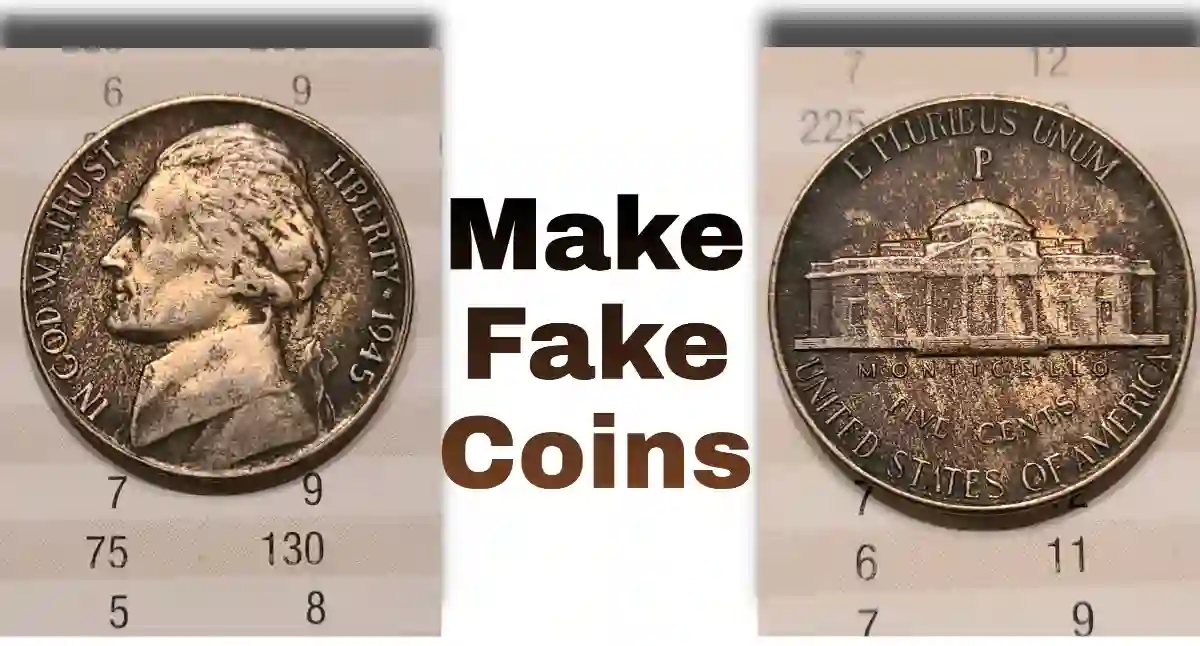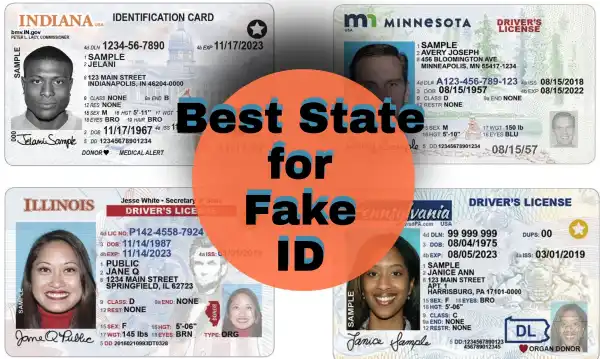So, in this guide, you will learn how to make fake coins. Fake silver coins, for example, are typically made from common metals like copper, brass, aluminum, or various alloys. For the coins to look like real silver, they might be coated with a slight layer of silver. Sometimes, these fake silver coins might have minute quantities of actual silver, but not enough to hold any significant value.
But for this tutorial, you will make one with dough. Read on to learn how to make some medieval money that looks real.
How to Make Fake Coins

For this guide, the ratio for the salt dough is 1 cup flour, 1/2 cup salt, and 1/2 cup water. Below are the steps to make fake coins:
1. Make the Salt Dough
Start off by making salt dough. For this, you are going to need a cup of flour, 1/2 cup of salt, and 1/2 cup of water. Then you need, of course, a mixing bowl. Now mix all the ingredients together so you end up with a dough that looks like a coin.
2. Prepare the Stamps
Meanwhile, you should put some baking paper on a tray. Now, you are going to take a little bit of the dough and form it into a ball. Press it onto the baking paper. So what you are doing right now is creating a stamp for the backside of the fake coin.
And for that, you need to get yourself some tools to make fake coins. You can get a pen, a knife, and a toothpick. Then you have to think of a cool pattern to make fake coins. The next thing is to start carving the pattern into your coin dough.
If you want to make dozens of fake coins, I would definitely recommend doing this step with clay because this way you get much more detailed coins in the end. You can use it more often, and you can also wash off the stamp if some dough gets stuck to it.
3. Bake the Stamps
Before you create the stamp for the front side, turn on the oven to top and bottom heat. Preheat it to 270 degrees Celsius or 338 degrees Fahrenheit. When done with the stamps, place them in the oven for about 15 to 20 minutes, give or take.
4. Make Fake Coins
If you leave the baked stamps a little bit too long, they will get a bit too dark. But now it’s time to finally create the real coins. So for that, you will again form a little ball with the salt dough. Now, you have to use the salt dough because if you use clay, the coins will break too easily.
5. Bake the Coins
When you’re done creating all your fake coins, also put them into the oven for about 15 to 20 minutes, give or take.
6. Apply the Finishing Touches
After your fake coins get hard, you need to take some sandpaper and sand off the rough edges a bit. When you have done that, take a black permanent marker and start coloring your coins, front and back. After you have colored everything black, take silver paint and start painting the coins.
You can make fake coins look real, like the medieval ones. The secret ingredient for making them look realistic is dirt. So get a bowl of dirt and start covering your coins in it. This type of coin may not work as quarters for a laundromat, so there’s probably no need to use it for laundry.
Alternatively, you can follow this video tutorial to complete your fake coin-making.
If you want to go a little above the edge, Daniel has busted out and shared clips on making FAKE mint error coins.
Are Fake Coins Illegal?

In most countries, it is illegal to make fake coins. Such activities can lead to severe legal consequences. If you were to succeed in making counterfeit coins, you might find yourself facing significant penalties. The authorities might offer you a stay at the “Gray Bar Hotel,” a euphemism for prison. While there, you might enjoy a limited view, obstructed by concertina wire and chain link fences.
The accommodations include free meals, a small room with a toilet, free medical care, and education. However, the quality of these services might not meet your expectations. The work assigned might not be appealing, such as making license plates.
And the lessons you learn from fellow inmates might be ones you never anticipated. It’s a path that many would advise against.
What Are Fake Coins Made of?
Fake silver coins are typically crafted from common metals like copper, brass, aluminum, or various alloys. To mimic the look of real silver coins, they might be coated with a slight layer of silver. Occasionally, these fake silver coins might have minute quantities of actual silver, but not enough to hold any significant value.
Is Faking Coins Worth It?
From a technical perspective, as both a professional metallurgist and an amateur coin collector, I’d like to add that counterfeiting modern-issue circulation coins is economically unviable. The production cost often exceeds the coin’s value.
For instance, the government once considered eliminating the one-cent coin due to its production cost. In 1982, they stopped making them from copper (95% Cu, 5% Zn) because it was too expensive and switched to zinc with a thin copper shell.
If your intention behind counterfeiting is monetary gain, the only feasible way would be to counterfeit “bullion” coins made of precious metals or historical “collectible” coins. However, this is a challenging endeavor. Precious metals like silver and gold have unique densities that are hard to replicate with cheaper metals. There have been attempts to fake gold ingots with tungsten, but such can be detected through electrical and thermal conductivity tests.
Conclusion
And there you go, you have been able to make fake coins that look like old medieval ones. Consider covering them in some clear coat – that’s totally up to you. And yes, they can be pretty light but they function very well as coins.
So have fun making your own, have fun playing with them, and have fun using the fake coins as a prop.
Outside of the scope of this tutorial, it’s illegal to produce replicas of US coins unless they are explicitly labeled as “COPIES”. The bottom line is that counterfeiting isn’t as lucrative, which is why many counterfeit coins originate from countries like China, where labor is cheap, and counterfeiters face fewer legal repercussions.
- Fake Coins, Counterfeit Coins, & Altered Coins. AmericanRarities
- Congress passes law to curb manufacturing of fake coins. NY Post
- Coin counterfeiting. Wikipedia
- 1460. COUNTERFEITING — 18 U.S.C. 489. U.S. DoJ Archives
- What are fake silver coins made of? ModernCoinMart
Read also: How to Pass a Fake 100 Dollar Bill [15 Methods Exposed]




